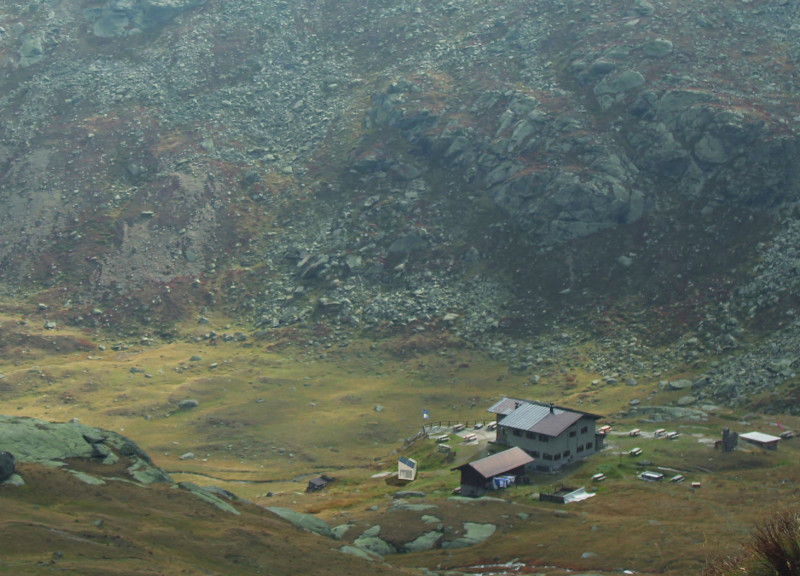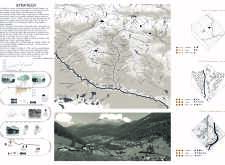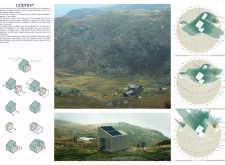5 key facts about this project
The architectural design in Rabbi Valley, located in the Italian Alps, provides an exploration of modern alpine living. Set at different elevations, this microhome development aims to support sustainable tourism and the needs of remote workers. The design includes three distinct prototypes, each created to serve specific users while respecting the unique characteristics of the alpine environment.
Design Concept
The microhome consists of two main volumes: one for living and another for sleeping. This separation allows for flexible use and accommodates both short-term visitors and long-term residents. The larger sleeping area has a single-pitch roof that provides privacy. In contrast, the smaller living area features a double-pitch roof, which enhances the views of the surrounding mountains and improves the overall experience for users.
Modularity and Structure
To address challenges associated with high-altitude construction, the design uses a lightweight modular structure that is easy to assemble on-site. Panels measuring 1 meter by 2.5 meters streamline the building process, making it suitable for the rugged conditions of the alpine landscape. This modular approach also allows for adjustments to the layout as needs change over time, offering flexibility in design.
Materiality
Sustainability is a key consideration in the choice of materials. Structural elements are made from fir tree, valued for its energy efficiency and eco-friendly qualities. Insulation is provided by rockwool, and an additional layer of cork is included for added waterproofing. The use of local stones for the foundation reflects the regional context, minimizing transportation issues and reinforcing a connection to the surrounding nature.
Sustainability Features
Energy efficiency plays an important role in the design. Solar panels on the building allow for energy independence, promoting responsible consumption. The project also incorporates systems for collecting rainwater and recycling gray water, further supporting its self-sufficient design.
The microhome project aims to meet the needs of contemporary alpine living with a focus on functionality and environmental care. The thoughtful relationship between the two volumes and the careful selection of materials highlight a bond with the natural surroundings. Such design emphasizes a practical approach to living in harmony with the landscape.






















































